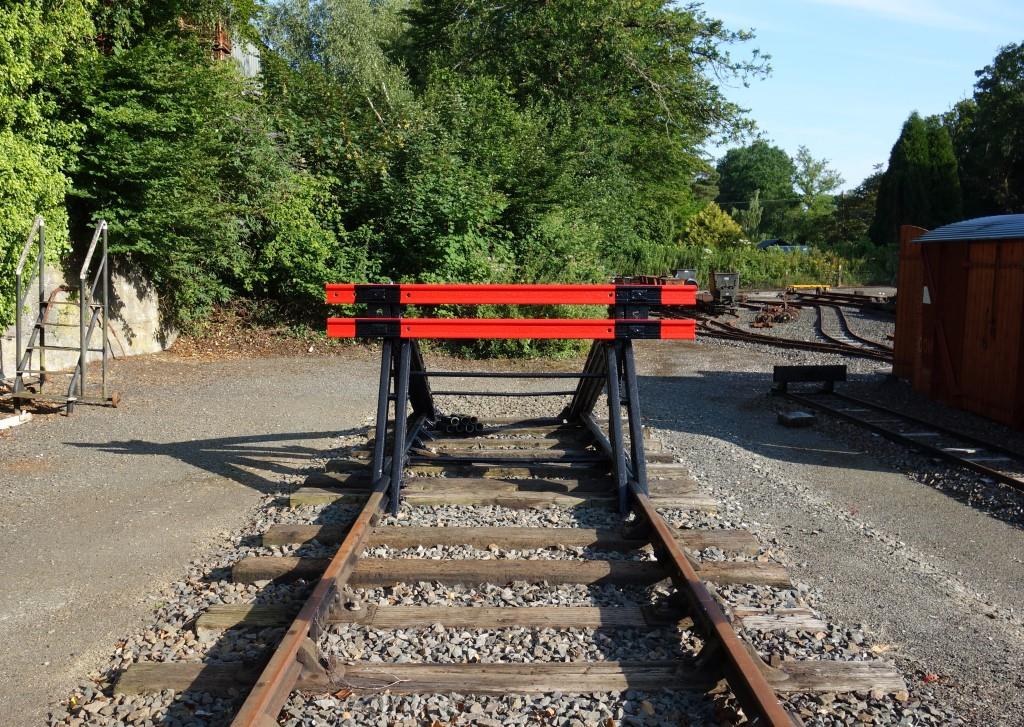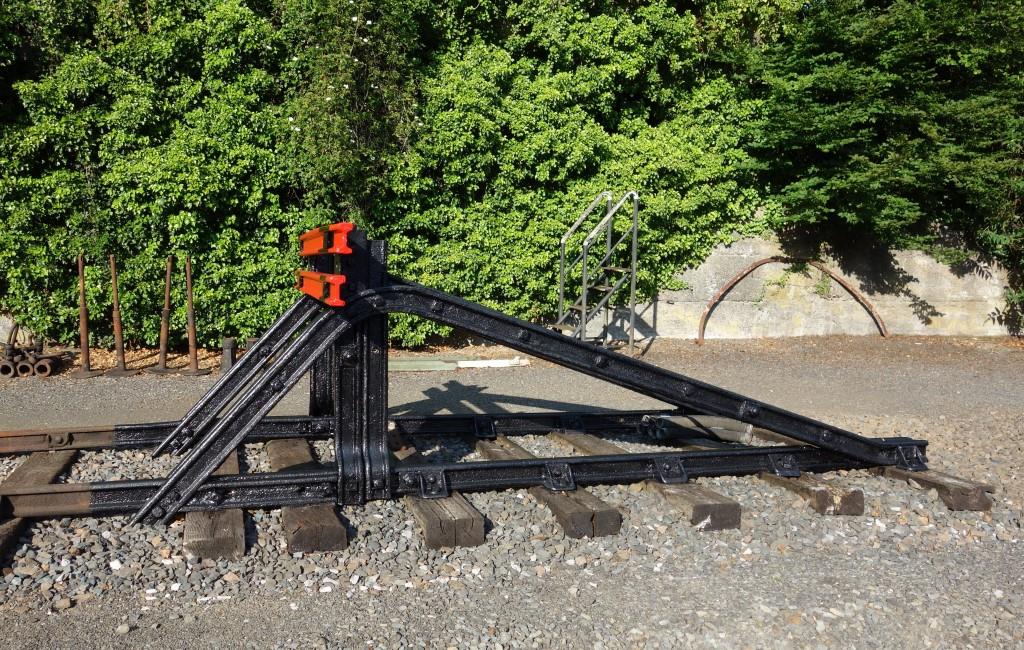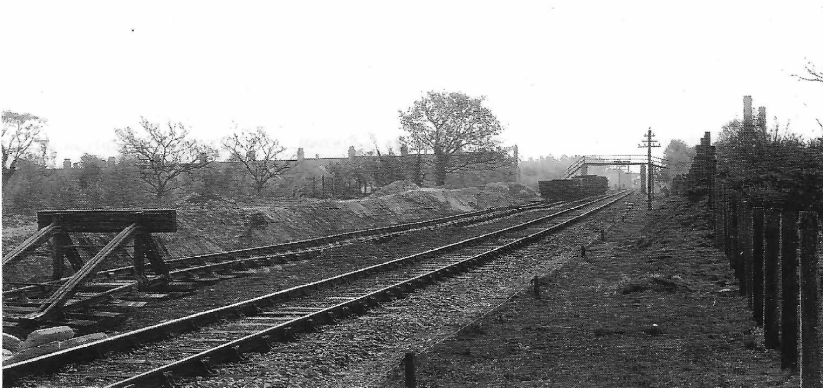According to the British Standards “Glossary of Building and Civil Engineering Terms,” stop block(s) is “deprecated;” the correct term is buffer stop, described as an “assembly provided at the end of a length of track to limit travel of vehicles.”
One old superintendent did not quite take this view. A former goods guard always chuckled as he recalled the droll advice he was given when, not for the first time, he found himself on the carpet after putting a wagon over the blocks while backing off a long freight at Exminster:
“Hansford, the stop block is there to denote the end of the road; it is not a means of stopping trains.”
This buffer stop was last painted in 1984, after it was recovered from van Geest’s siding at Heathfield. Fifty pounds were paid for the stop and 64 ft. of track (32 ft. was once a standard rail length).


Friend of the railway, Keith Ettle, a renowned modeller, calls it a “long-stop;” its end brace rails are certainly more acute than later types. Its weakness is that the brace rails are not continued alongside the running rail to add strength. What must have been a severe collision long ago has buckled the rail on one side, giving the assembly a characteristic tilt.
The chaired sleepers were brought to Christow on the railway’s half-ton autotruck, five at a time. The rails were loaded, one at a time, onto the autotruck, taken up the ramp and left on the Teign Valley bay platform; this was the only occasion the vehicle ever carried 32-foot wide loads.
A local firm wanted £40 to forklift the buffer stop onto a lorry and so the Christow gang went with blocks, light rails and 45 gallon drums, and jacked up the whole thing. Two drums and a rail formed a bridge so that the lorry could reverse beneath it. The ballast was ramped so that the lorry would pick up the load as it reversed.
Remarkably, after the lorry had berthed alongside the bay and the rails had been slid over, the buffer stop arrangement worked perfectly and a greater time was spent loading the bits that had been used. And all for a saving of £40 (£130 today).

In the background can be seen Haytor View, the terrace of houses built by Candy & Co. for its workers, and the footbridge giving access to the factory.
Some of the concrete “pot” sleepers from the Up Siding and the loading gauge are also at Christow.
Another collision occurred at Christow in 1997 when the railway’s brake van had just been put on rail. The brake was applied only lightly because it was intended to push the van with the engine, uncoupled, down the severe gradient. The driver didn’t see the van run away but the crane banksman reported that it “went down the track at a considerable rate and jumped up in the air.”
It was later found that the fish bolts had sheered and the blocks had moved six inches. The simple remedy was to couple the van to the blocks and pull them back with the engine.
The van had new brake blocks which had not had chance to bed in because they had never been used while the wagon was in motion.

